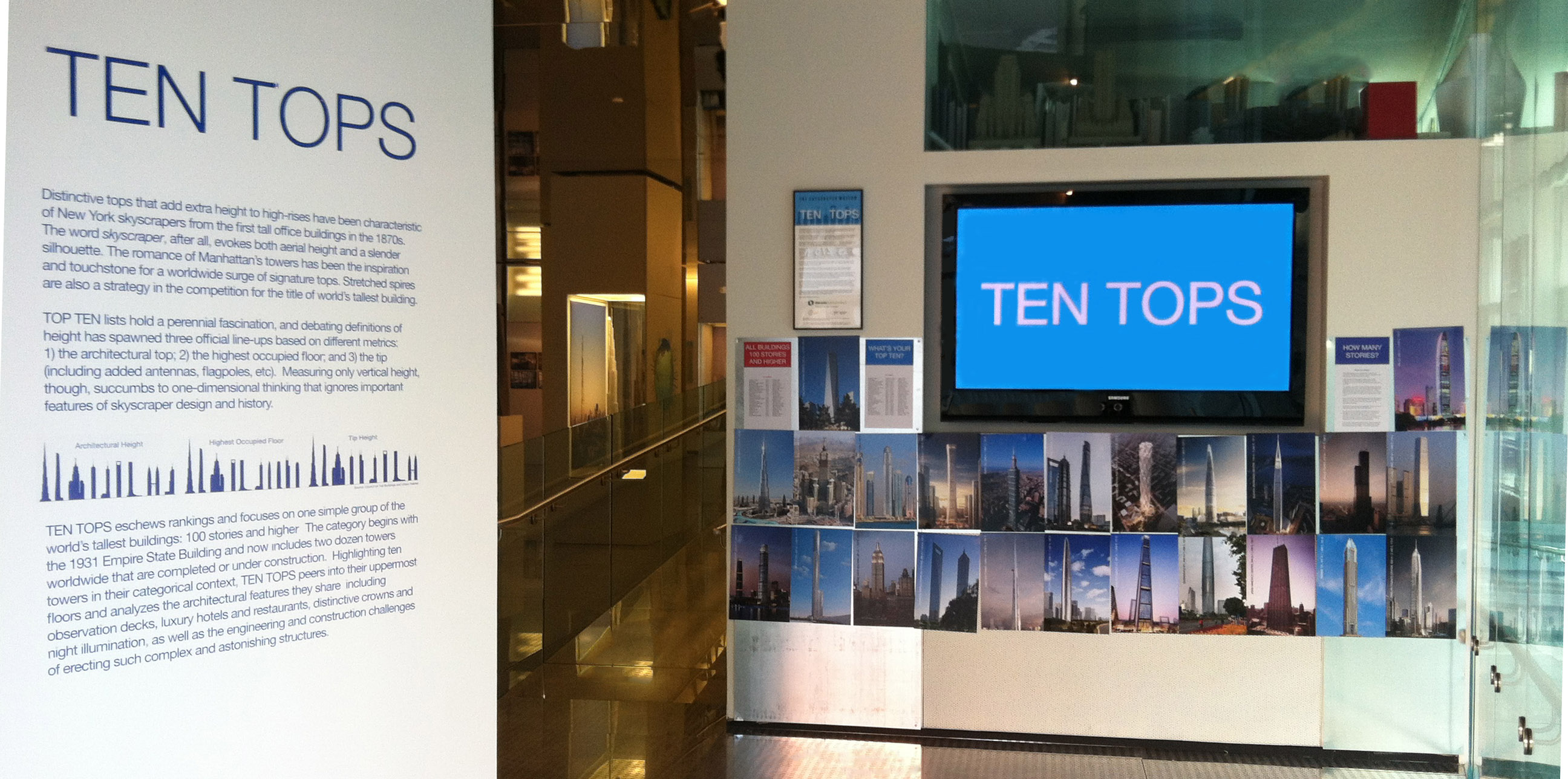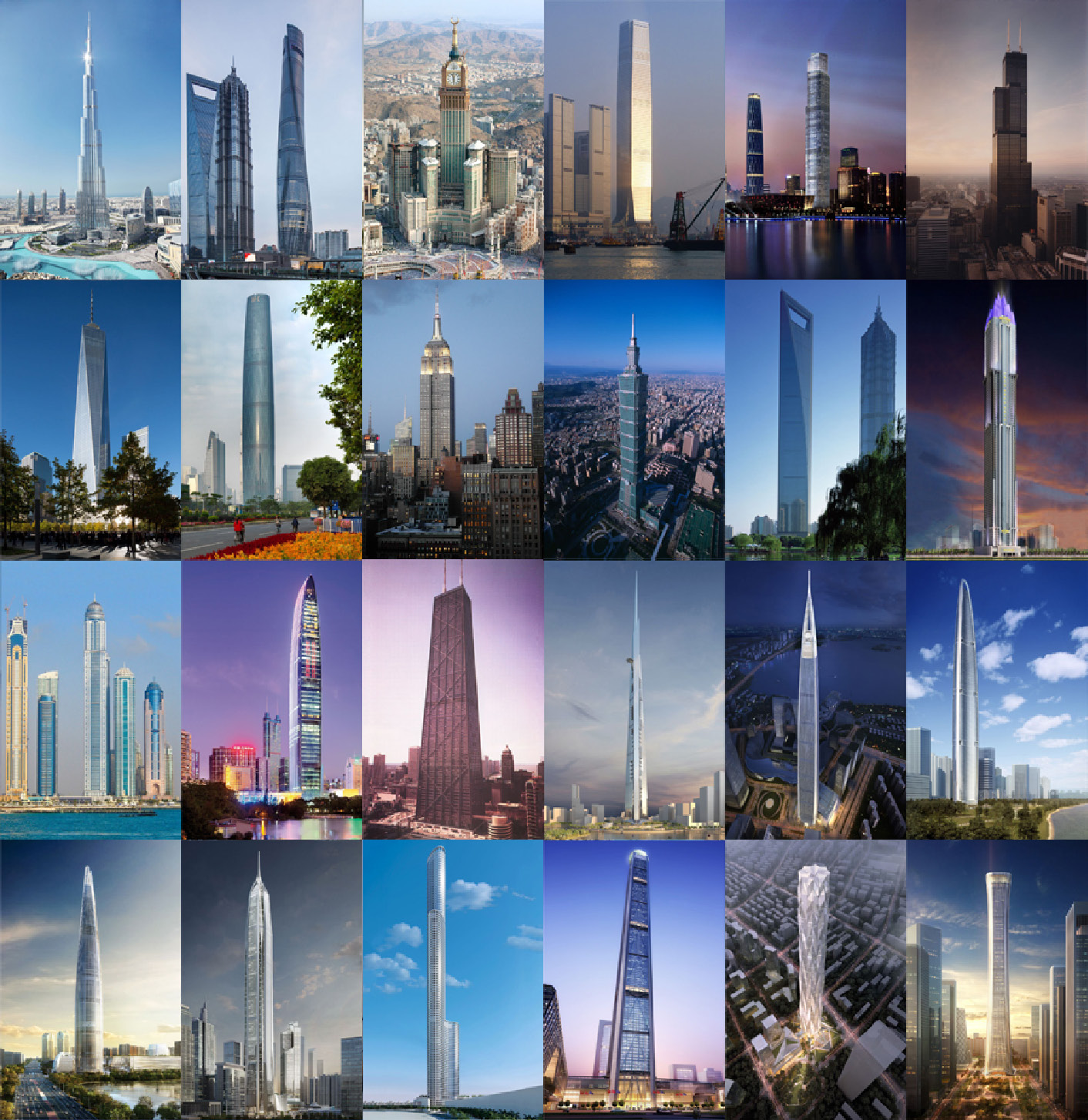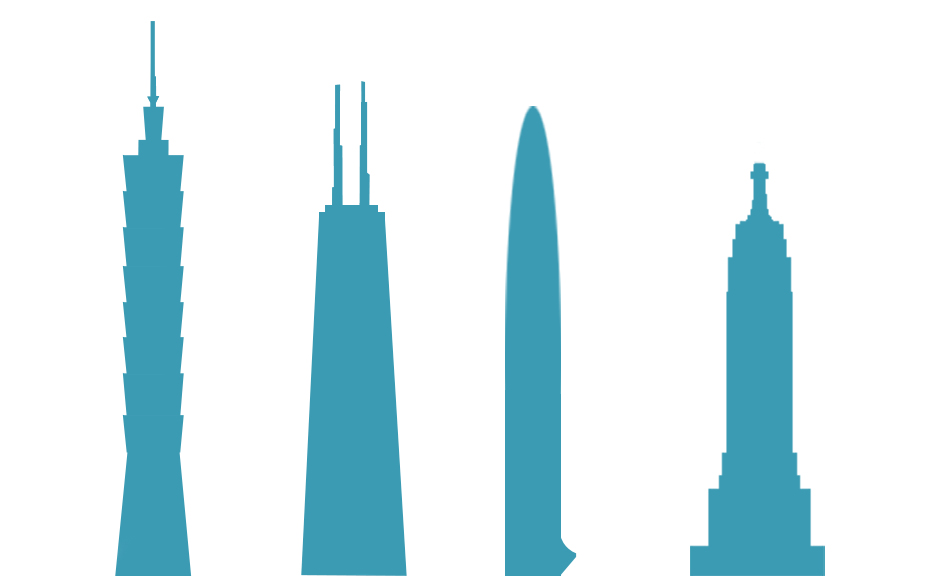The Skyscraper Museum is devoted to the study of high-rise building, past, present, and future. The Museum explores tall buildings as objects of design, products of technology, sites of construction, investments in real estate, and places of work and residence. This site will look better in a browser that supports web standards, but it is accessible to any browser or Internet device.
CATEGORY: 100+ STORIES
























The tops of the 24 towers of 100 stories or more that are completed or under construction are represented in the grid above. Hover over an image for more information.
LISTS, LISTS, LISTS
There are multiple ways to rank the world’s tallest buildings. For those fixated on measuring only vertical height, the professional organization the Council on Tall Buildings and Urban Habitat has created three official definitions based on different metrics: 1) the architectural top; 2) the highest occupied floor; and 3) the tip (including added antennas, flagpoles, etc.).
For this exhibition, we decided on a simple category: all the buildings in the world today that are 100 stories or taller and that are completed or under construction. Even what constitutes the height in stories can be subjective, so we simply accept the number of stories recorded by the developer or architect.

The installation view of the introductory wall shows, surrounding the video, the complete group of the 24 towers in our category of 100 stories and taller. To undermine the idea of a hierarchy that lines up building from the tallest down, the projects are printed on "refrigerator magnet" vinyl that invites visitors to rearrange the order to create their own "Top Ten."

Images of all 24 buildings of 100+ stories. The towers are ordered by number of stories, starting from Burj Khalifa at the top left, through the John Hancock Center. Included are completed buildings (shown in photographs) and towers which have topped out. The last 9 buildings, shown as renderings, are still in their early stages of construction. Click here for building identification.
Sometimes the floor count is an equivalent. For example, the Empire State Building has been described as 102 stories, even though above the 86th-floor observation deck, there are no actual floors, only a staircase and an elevator that ascends the steel frame to a domed room at the summit. Residential towers often exaggerate numbers to make their penthouses seem higher. Many developers leave out some “unlucky” floor numbers, like 13 in the United States, or floors with “4s” in China, where the character can be associated with death.

Scaled lineup showing (left to right) Taipei 101, John Hancock Center, KK 100, and the Empire State Building. This lineup illustrates the difference in heights of four buildings with floor counts of 101, 100, 100, and 102 stories, respectively. Scaled silhouettes courtesy of CTBUH.
The shortest of the 100-story buildings in the exhibition is Chicago’s John Hancock Center at 1127 ft. (344 meters). The tallest with 100 stories is KK 100 in Shenzhen, China at 1,449 ft. / 442 meters. The lack of a relationship between sheer vertical height and floor count can further be seen in the 400-foot difference between the 1,671-foot tip of Taipei 101 (which counts then-occupied spire) and the 1,250-foot Empire State Building.
